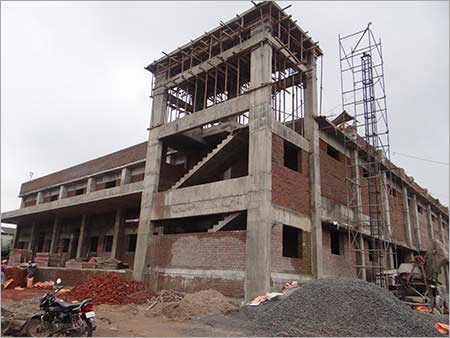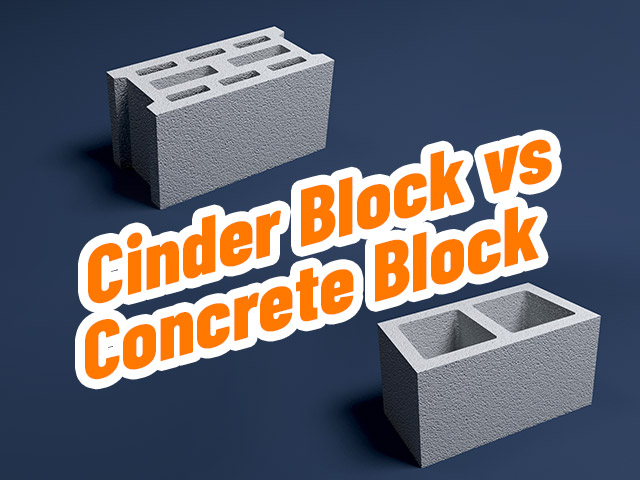Table of Contents
Concrete is basically a heterogeneous mixture, which consists of cement, sand, stone aggregates and water. For a big project, where the higher grade of concrete is used, mix design is must to determine the quantities of the materials required to maintain the grade. But when a lesser grade of concrete is used, quantity analysis for Cement, Sand And Aggregate is done by some basic calculation.
Proper quantities of cement, sand, aggregate and water make the concrete strong and durable. If the ingredients are not properly maintained, the concrete will not achieve the desired strength.
When does quantity analysis require ??
In this post, I will share the detailed procedure for the quantity analysis. As per IS 456: 2000, Different grades of concrete are classified as M5, M10, M15, M20, M25, M30 etc. Here M stands for Mix and the number after M indicates the Characteristic Compressive strength (fck) of the concrete in N/mm2 @28 days when checked with 15cm×15cm×15cm cube in a direct compression test. Concrete of grade up to M25 does not require mix design. But for above that grade, mix design is done to analyze the quantities.
Various Grades of Concrete
Bureau of Indian Standard has classified concrete in different grades, as I stated above. These different grades are achieved by changing the proportion of the raw materials of the concrete. As Per IS 456: 2000, the concrete mix design has the following concrete mix proportions:-
Types of Concrete Mix
Concrete mix is basically divided into two types-
Nominal Mix
Nominal mix concrete is used, where great strength is not required. Thus, up to M25 grade of concrete is used as the nominal mix. Mix ratio and ingredients proportion is predefined and specified by the BIS. For example, the ratio M20 Mix is 1:1.5:3 by volume of cement, sand and stone chips respectively. Please check the above image to see the other ratio for other mixes.
Design Mix
For a big project, such a predefined ratio of constituents is not used. Constituents are examined properly in the laboratory. Then using the test results, the required ratio is determined. In this post, I will not discuss the Mix Design procedure as I will make another post on that.
Basic Concept for the Calculation
As we express the ratio in volume and it is very difficult to mix with volumetric ratio, it is necessary to convert them in weight. We know that if we multiply the volume of different materials with their respective unit weight, it will give the required amount of material.
To determine the individual volume of cement, sand and stone chips, their self ratio is divided by the sum the ratio, then multiplying it with the total volume of the concrete. Then they are multiplied by their unit weight.
Calculation of Quantities of Cement, Sand, Aggregate & Water
To calculate the quantities of Cement, Sand, Aggregate and water, we will assume 1 m3 of the concrete mixture. Also, assume that we are using an M20 grade of concrete, thus the ratio of ingredients is 1:1.5:3, and the water-cement ratio is 0.45.
Therefore, sum of the mix proportion = (1+1.5+3) = 5.5
We know that the volume of the dry mix is more than that of the wet mixture. Therefore, it is necessary to convert the wet volume into dry volume. As per IS recommendation, the volume is increased by 54% with respect to the wet volume. So, we have to 1.54 with the wet volume to convert it to dry volume.
So, the dry volume of the concrete mix = 1.54 x 1 m3 = 1.54 m3
Calculation for Cement
The volume of cement = (ratio of cement/sum of the ratio) x total volume = (1/5.5) x 1.54 = 0.28 m3
Weight of 1 m3 Cement is 1440 KG. So, weight of 0.28 m3 cement = 0.28 x 1440 = 403.2 KG.
Now, the cement is specified in bags, not in Kg. So, we have to convert it into bags.
So, number of bags = 403.2/50 = 8.06 bags ~ 8 bags (As weight of i bag cement is 50 KG)
NB:- Alternatively we can divide the volume of cement in 1 m3 concrete by 0.0347, as the weight of 1 bag cement = 0.0347 m3, to determine the number of bags.
Calculation for Sand
Using the same formula, we get the volume of sand = (1.5/5.5) x 1.54 = 0.42 m3
Weight of 1 m3 Sand is 1600-1800 KG. So, assuming 1600 KG, weight of 0.42 m3 sand = 0.42 x 1600 = 672 KG.
Calculation for Stone Aggregate
Similarly, the weight of coarse aggregates = (3/5.5) x 1.54 = 0.84 m3
Weight of 1 m3 Sand is 1500-1800 KG. So, assuming 1550 KG, weight of 0.84 m3 sand = 0.84 x 1600 = 1302 KG.
The density of aggregate may go higher if void spaces decrease. 5mm aggregate has more density when compared with the 20mm size of aggregate
Calculation for Water
Assumed W/C ratio = 0.45
And, the total weight of cement in 1 m3 concrete = 403.2 KG.
Water required for 1m3 of Concrete = 403.2 x 0.45 = 181.44 KG = 181.44 Litre. (Volume of 1 KG water = 1 Litre)
Summary
Therefore, we need the following quantities of cement, sand, coarse aggregate and water to prepare 1 m3 concrete of grade M20.

Quantity of Cement, Sand, Aggregate, Water required for Different grades of concrete
Using the same procedure, we can calculate the quantity of materials required for different grades of concrete using their proportion of materials.
I hope this article will help you. You may also want to see my other post from my Blog. If I have missed anything here, please let me know about that in the comment below this post.
Share it with your friends.
Happy Learning.
If you liked this article, then please help me to share this article with your friends through Facebook, Twitter, WhatsApp or Instagram. You can also find us on Facebook, Twitter, Instagram, Telegram Channel, YouTube Channel and Pinterest. Also, Subscribe to our mailing list to get new post update from us. And, do me a favour, if you find this post helpful, rate a 5 star below-






